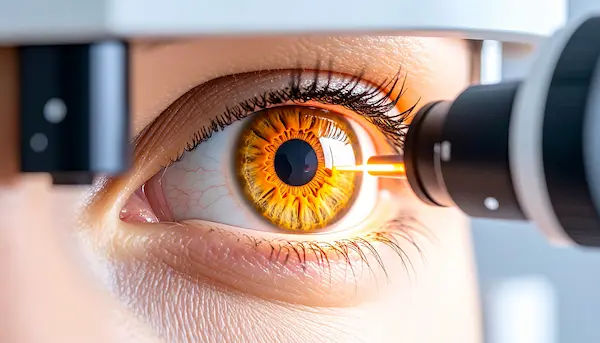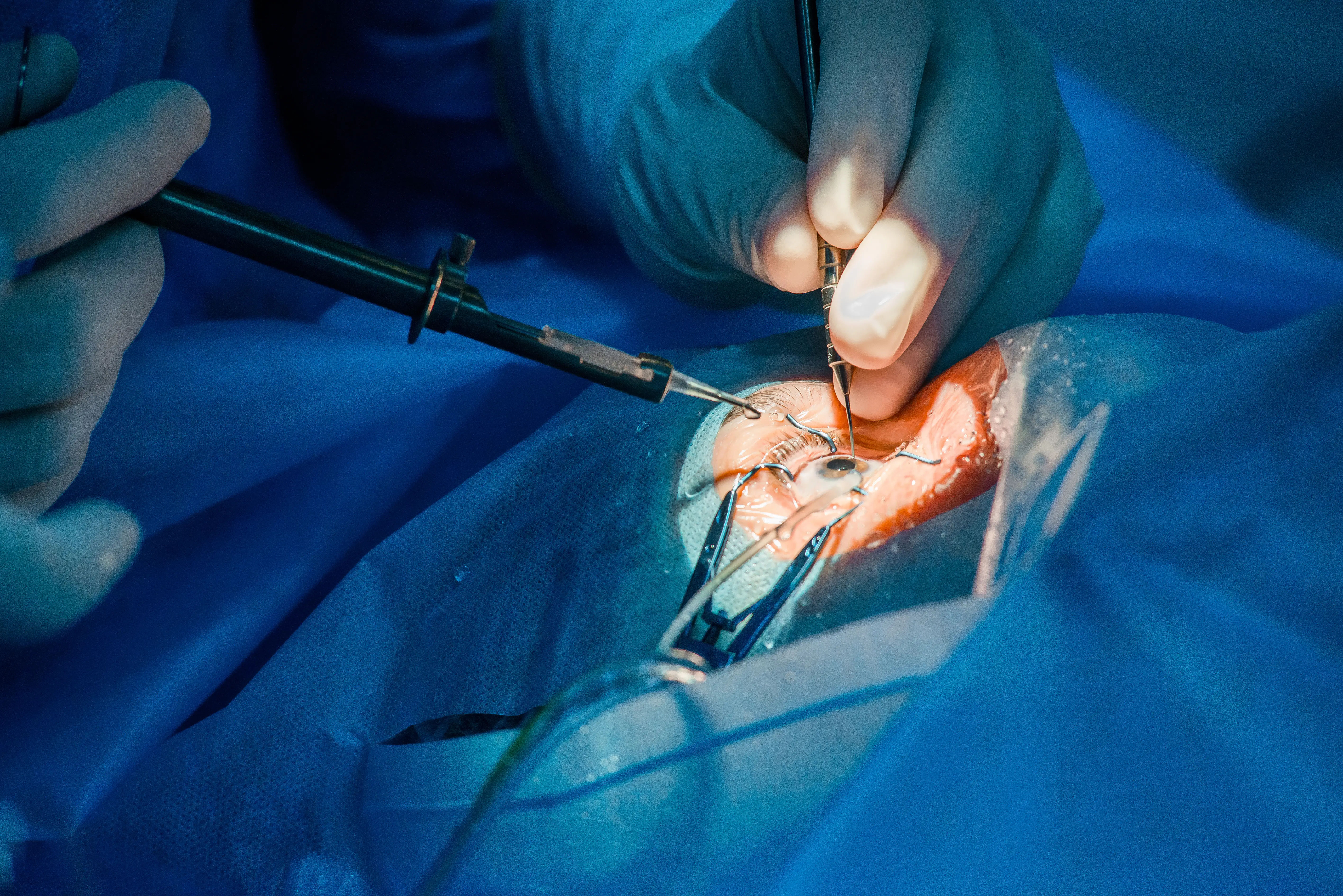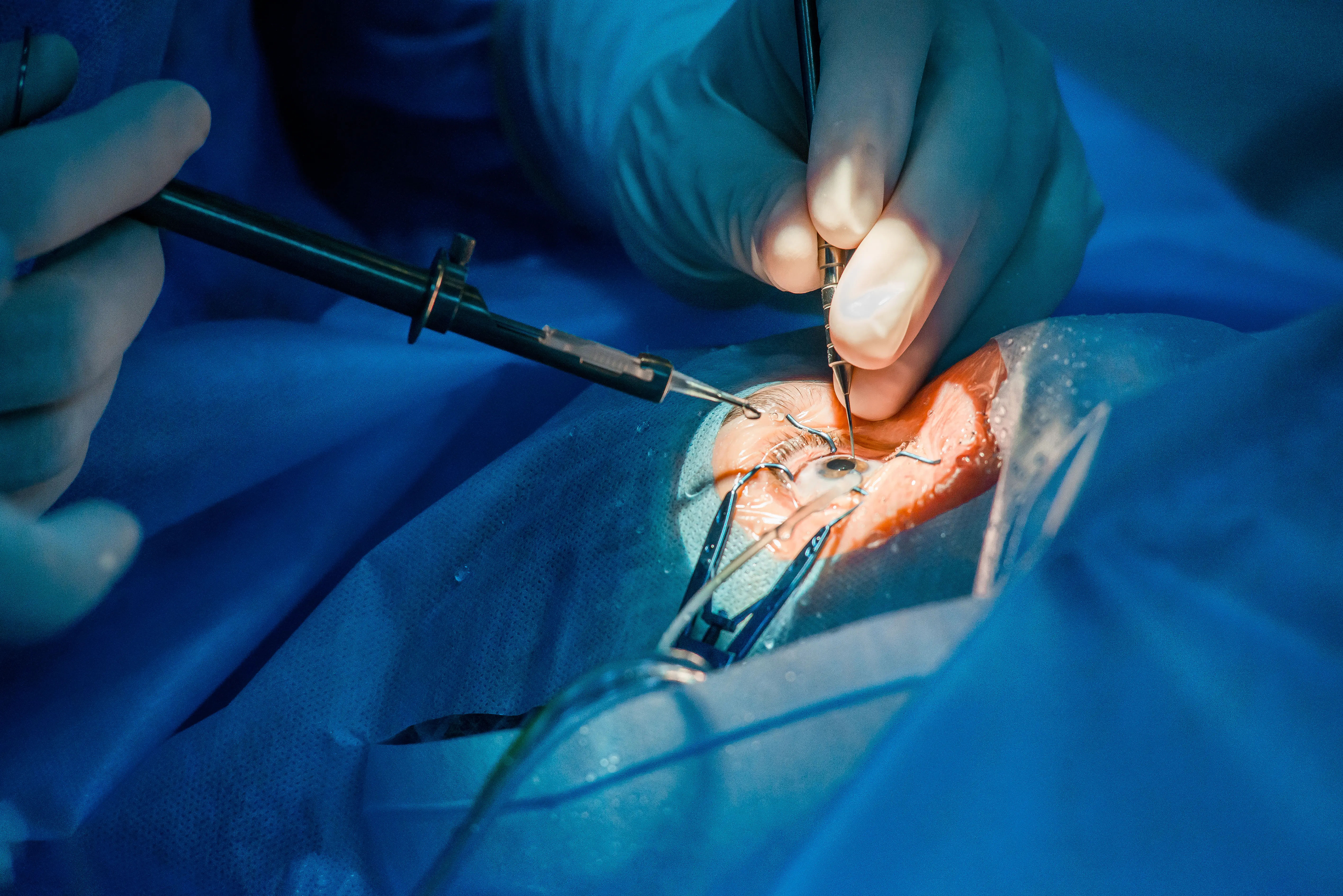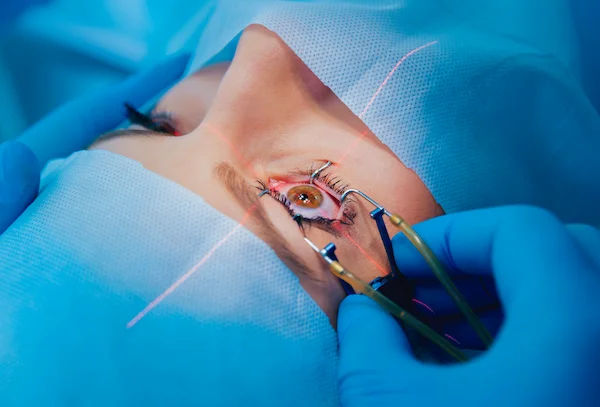Guide to Eye Surgery Debunking Myths
Eye surgery myths busted! Get the facts on common procedures like LASIK and cataract surgery. Our essential guide addresses safety, recovery, and results to help you make informed decisions.

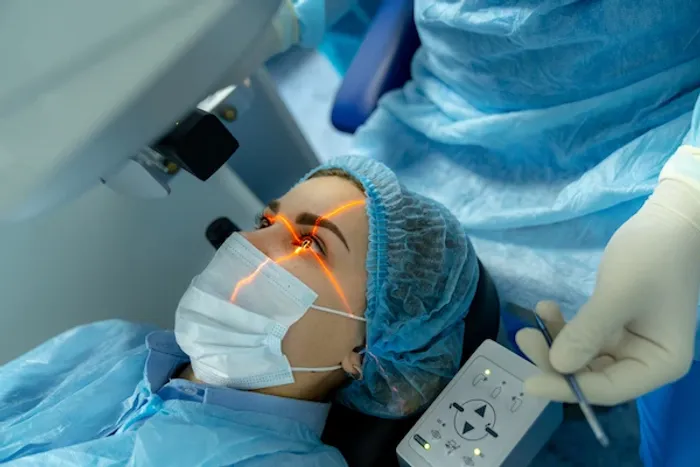
Introduction
The decision to undergo eye surgery is a significant one, often clouded by a mix of hope and apprehension. Visions of a life free from glasses or contacts are exciting, but they are frequently accompanied by stories and fears passed down through generations or found in the darker corners of the internet. It's time to clear the air. This guide is designed to cut through the misinformation and provide a clear, factual basis for understanding modern eye surgery. We will systematically debunk the most common myths, empowering you with the knowledge to have an informed conversation with your doctor. Whether you're considering LASIK, cataract surgery, or another procedure, understanding the reality behind the rumors is the first step toward making a confident choice about your vision health.
The Foundation: Understanding Different Types of Eye Surgery
Before we tackle the misconceptions, it's crucial to understand that "eye surgery" is not a single procedure. It's an umbrella term for various operations designed to correct different vision issues.
Laser Vision Correction (LASIK, PRK, SMILE)
These procedures reshape the cornea—the clear front part of your eye—to correct refractive errors like nearsightedness (myopia), farsightedness (hyperopia), and astigmatism.
- LASIK: The most well-known procedure, where a thin flap is created on the cornea, a laser reshapes the underlying tissue, and the flap is repositioned.
- PRK: An older laser procedure where the outer layer of the cornea is removed entirely and not replaced; it heals naturally. It's often recommended for patients with thinner corneas.
- SMILE: A newer, minimally invasive procedure that corrects myopia and astigmatism through a small, keyhole incision without creating a corneal flap.
Cataract Surgery: The Most Common Procedure
This is the gold standard for treating cataracts, a clouding of the eye's natural lens. Contrary to popular belief, a laser is not always the primary tool. The surgeon typically uses ultrasonic energy to break up and remove the cloudy lens, replacing it with a clear, artificial intraocular lens (IOL). Modern IOLs can also correct pre-existing vision problems.
Other Specialized Procedures
This category includes surgeries for glaucoma, retinal detachments, and corneal transplants, each addressing specific, serious eye conditions.
Consult Top Specialists
Debunking the Top 10 Myths About Eye Surgery
Now, let's address the most persistent myths head-on.
Myth 1: All Eye Surgeries Are Painful and Require a Long Recovery
This is perhaps the most common fear. The reality of modern eye surgery, particularly laser procedures, is far more comfortable than most people imagine.
- The Reality: Patients are given anesthetic eye drops that numb the eye completely. During the procedure, you might feel slight pressure, but not sharp pain. Post-surgery, it's common to experience some irritation, watering, or a gritty sensation for a few hours, but this is easily managed with prescribed drops. Most LASIK patients notice dramatically improved vision within 24 hours. While PRK has a longer recovery period (several days to a week for clear vision), the discomfort is still manageable. The idea of a long, painful recovery is largely outdated.
The Reality of Modern Surgical Comfort
Technological advancements have made procedures quicker and safer. For example, a typical LASIK procedure takes about 10-15 minutes for both eyes. The use of femtosecond lasers (blade-free) has increased precision and reduced recovery time. If you are concerned about pain management, discussing this with a surgeon from Apollo24|7 can provide personalized reassurance and a detailed plan for your comfort.
Myth 2: Eye Surgery Is Extremely Risky and Can Make You Go Blind
The fear of blindness is the single biggest deterrent for many considering eye surgery. It's a serious concern, but the statistical reality is very different.
- The Reality: The risk of a serious, sight-threatening complication from laser eye surgery is exceptionally low—estimated to be less than 1%. Infections, which are a risk with any surgery, occur in only about 0.03% of cases and are typically treatable with prompt care. It's important to note that cataract surgery is actually performed to restore sight lost to cataracts and has a very high success rate. The most common side effects, like temporary dry eyes or seeing halos at night, are usually mild and resolve over time.
Understanding the Real Safety Profile
The key to safety is proper patient screening. A comprehensive pre-operative evaluation by a qualified ophthalmologist is critical to identify any potential risk factors (e.g., thin corneas, unstable vision, certain health conditions) that would make someone a poor candidate. This rigorous screening process is the primary reason the safety record for these procedures is so strong.
Myth 3: You Can Be "Too Old" or "Too Young" for Eye Surgery
Age is a factor, but not an absolute barrier.
- The Reality: There is no upper age limit for cataract surgery, as it is a medically necessary procedure. For laser vision correction, good candidates are typically over 18 (to ensure their prescription has stabilized) and in good general health. The decision is based on the health of your eyes, not your birth certificate. For older adults considering LASIK, the surgeon will evaluate how other age-related eye conditions, like presbyopia (the need for reading glasses), will affect the outcome.
Myth 4: The Results of Laser Eye Surgery Aren't Permanent
The Reality: The corneal reshaping performed by the laser is permanent. However, eye surgery does not stop the natural aging process of your eyes. Your vision can still change later in life due to presbyopia or the development of cataracts. For most patients, the correction achieved by LASIK or PRK lasts for decades. A small percentage may require a "touch-up" procedure years later due to minor changes.
Myth 5: LASIK Can Fix All Vision Problems, Including Presbyopia (Reading Vision)
The Reality: LASIK is excellent for correcting distance vision but does not directly cure presbyopia, the age-related loss of near focus. However, a technique called monovision LASIK can be an option, where one eye is corrected for distance and the other for near vision. Additionally, during cataract surgery, multifocal or accommodating IOLs can be implanted to address both cataracts and presbyopia simultaneously.
Myth 6: If You Have Astigmatism, You Can't Have Laser Surgery
The Reality: This was true in the early days of laser surgery, but it is now a myth. Modern laser technology is exceptionally effective at treating astigmatism by reshaping the irregular cornea into a more symmetrical sphere. In fact, treating astigmatism is a standard part of laser vision correction today.
Myth 7: The Laser Can "Slip" and Damage Your Eye
The Reality: This is a scene from a movie, not a medical reality. Modern lasers are equipped with sophisticated eye-tracking technology that follows your eye's movements thousands of times per second. If your eye moves beyond a certain range, the laser automatically pauses and re-centers itself once your eye is back in position, making a "slip" virtually impossible.
Myth 8: Cataract Surgery Is Only for When a Cataract Is "Ripe"
The Reality: This is an outdated concept from decades past when surgery was riskier and less advanced. Today, the decision for cataract surgery is based on how much the cataract is impairing your daily life—like driving at night, reading, or watching TV. You do not need to wait until the cataract is "ripe" (completely opaque). In fact, waiting too long can make the surgery more difficult.
Myth 9: You'll Never Need Glasses Again After Surgery
The Reality: While the goal is significant freedom from glasses, it's important to have realistic expectations. Most people achieve 20/20 vision or better, but you may still need glasses for specific tasks, especially as you age. For instance, you might need reading glasses for fine print due to presbyopia. Discussing your lifestyle and vision goals with your surgeon will help set achievable expectations.
Myth 10: Eye Surgery Is Prohibitively Expensive and Not Worth the Cost
The Reality: While there is an upfront cost, it's helpful to think of it as a long-term investment. When you factor in the recurring cost of glasses, contact lenses, solutions, and eye exams over 20-30 years, the cost of LASIK vs glasses over time can be comparable or even favorable to laser surgery. Many providers offer financing plans to make the procedure more affordable. The value of improved quality of life—convenience, freedom, and confidence—is also a significant factor for many.
Conclusion
Navigating the world of eye surgery requires separating decades-old fears from today's technological realities. The myths we've debunked often stem from a time when these procedures were less refined. Today, with advanced laser technology, sophisticated safety systems, and rigorous patient screening, vision correction surgery is one of the most successful elective procedures available. The path to clearer sight begins with clear information. Armed with the facts, you can move forward confidently. The next step is to have a personalized conversation with a specialist who can evaluate your unique eyes and vision goals. If you are considering vision correction, consult an ophthalmologist online with Apollo24|7 to discuss your candidacy and get your specific questions answered.
Consult Top Specialists
Consult Top Specialists

Dr Rajesh Rastogi
Ophthalmologist
33 Years • MBBS, MS Ophthalmology
New Delhi
Rotary Diabetic Centre, New Delhi
Dr. Padmini S
Ophthalmologist
4 Years • MBBS,MS
Bengaluru
Apollo Medical Center, Marathahalli, Bengaluru
Dr. V.chittibabu
Ophthalmologist
30 Years • MBBS, MS
Vellore
Krupa Eye Clinic, Vellore
Dr. Akashdipta Saha
Ophthalmologist
4 Years • MBBS, MD(Ophthalmology), Fellowship in Retina & Vitreous
Delhi
AIIMS, Delhi
Dr. Harshavardhan Reddy
Ophthalmologist
3 Years • MBBS , MS (Ophthalmology)
Hyderabad
Ram Dev Rao Hospital, Hyderabad
Consult Top Specialists

Dr Rajesh Rastogi
Ophthalmologist
33 Years • MBBS, MS Ophthalmology
New Delhi
Rotary Diabetic Centre, New Delhi
Dr. Padmini S
Ophthalmologist
4 Years • MBBS,MS
Bengaluru
Apollo Medical Center, Marathahalli, Bengaluru
Dr. V.chittibabu
Ophthalmologist
30 Years • MBBS, MS
Vellore
Krupa Eye Clinic, Vellore
Dr. Akashdipta Saha
Ophthalmologist
4 Years • MBBS, MD(Ophthalmology), Fellowship in Retina & Vitreous
Delhi
AIIMS, Delhi
Dr. Harshavardhan Reddy
Ophthalmologist
3 Years • MBBS , MS (Ophthalmology)
Hyderabad
Ram Dev Rao Hospital, Hyderabad
More articles from Eye Problem
Frequently Asked Questions
What is the best age for LASIK surgery?
There isn't one 'best' age, but the ideal window is typically between 20 and 40, after your prescription has stabilized for at least one year. Candidacy depends more on eye health than a specific age.
How long does cataract surgery take to recover?
Most patients see significant improvement within a few days. Vision typically stabilizes completely within four to eight weeks. You can resume most normal activities within a day or two, following your surgeon's specific instructions.
Is laser eye surgery safe for someone over 40?
Yes, it can be. Many people over 40 are excellent candidates. The evaluation will focus on your eye health, the stability of your prescription, and how to manage presbyopia (the need for reading glasses) as part of your treatment plan.
Can I have LASIK if I have dry eyes?
Pre-existing severe dry eye can be a contraindication for LASIK, as the procedure can temporarily worsen dryness. However, many people with mild dry eyes can still be candidates after a thorough evaluation and treatment of the dry eye condition first.
What is the difference between PRK recovery time vs LASIK?
LASIK recovery is faster. Most LASIK patients have clear vision within 24 hours. PRK recovery involves the outer corneal layer healing over several days, so it can take a week or more to achieve clear, stable vision. PRK is often chosen for patients with thinner corneas.
